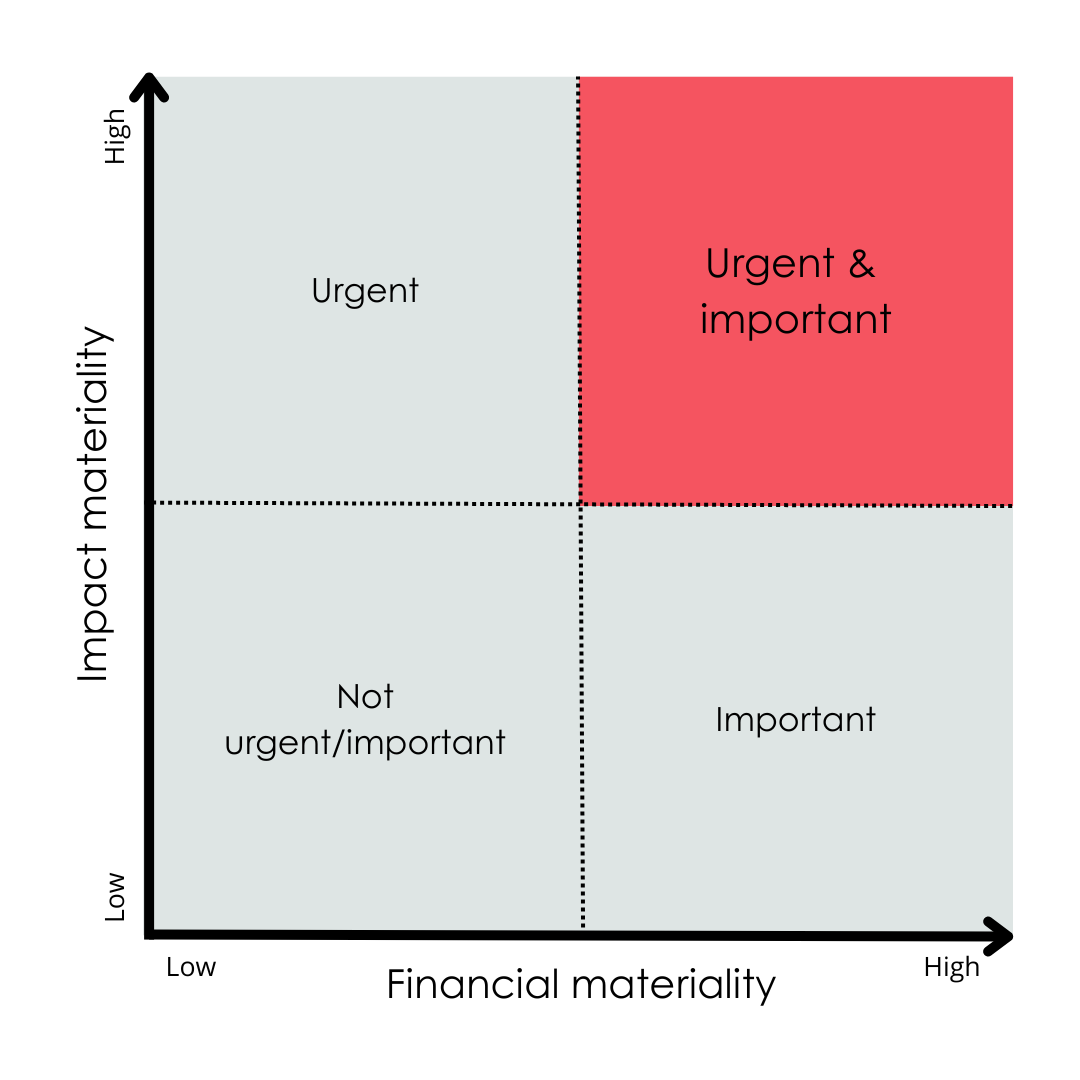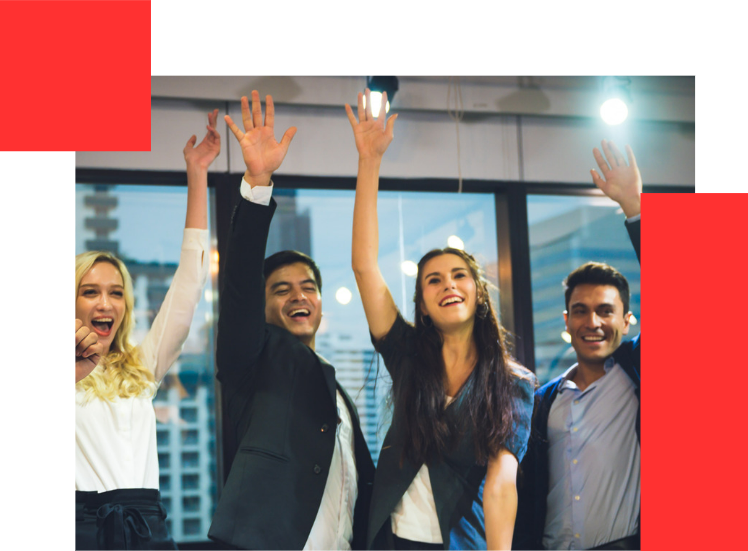A recap of our Great Place To NetWork session on October 23, 2023
Throughout history, the social aspect of sustainability has often been overlooked. As a company with a strong focus on employee well-being and sustainable working conditions, Great Place To Work was determined to address this oversight. Especially with the introduction of the European CSRD guideline, which mandates companies to focus on ESG matters, it was time to aid organizations in achieving social sustainability. Fast forward to Tuesday, October 23rd when Great Place To Work hosted a networking session dedicated to this very topic. Distinguished speakers, including Professor Xavier Baeten (Vlerick Business School), Cécile Kempeneers (Salesforce), and Toon Torfs (Torfs), provided valuable insights into the subject. This blog post summarises the highlights and key take aways of this interesting session.
Decoding the Alphabet Soup of Sustainability
Don’t worry if acronyms like CSR, ESG, CSRD, or ESRS sound Greek to you. Even though 60% of the Great Place To Network attendees considered themselves knowledgeable about sustainability, these acronyms caused some nervous chuckles in the audience.
Corporate Social Responsibility (CSR) might ring a bell when discussing a company’s commitment to sustainable and ethical practices. However, there’s a noticeable shift away from CSR to ESG (Environment Social Governance). ESG provides a structured framework with specific criteria that companies must adhere to on environmental, social, and governmental matters. In contrast, CSR is more general and holistic in its approach.
Soon, companies within the EU will be required to report on their ESG criteria as part of legally mandated European requirements and obligations: the Corporate Sustainability Reporting Directive (CSRD). This report has to be according to the European Sustainability Reported Standard (ESRS).
When talking about ESG, one must not forget that sustainability is a trajectory, a process for companies. Every company is ‘on the road’ and faces some bumps along the way. This CSRD report presents an opportunity to strategically assess your position on the road and evolve your company’s ESG policy. Especially the social side of ESG can be key for your organization’s evolution and employer branding.

The Social Side of ESG: The Unsung Hero
When discussing the social pillar of ESG, one thing is very important to keep in mind: stakeholder engagement. To make sustainability initiatives effective, it’s inevitable to get employees, management, customers, and society as a whole on board. Professor Baeten gave some insights on how to achieve this engagement. One best practice is an employee voice group: these groups allow involved and engaged employees to regularly meet and plan activities and projects on topics such as well-being or communication.
To maximize the benefits of sustainability efforts, it's crucial to recognize the impact your company can have. This involves creating a materiality matrix that considers both impact and financial materiality. The financial aspect is important for ensuring the company's financial health, while the impact aspect focuses on the impact on society. By balancing this matrix, you create a win-win situation for both your company and the society. However, it’s vital not to stop at the matrix: it should be translated into specific targets and projects.

Putting Theory into Practice - Best practices from (former) Best Workplaces Salesforce and Torfs
Both Salesforce and Torfs have their sustainability targets and projects. They both understand that by taking both stakeholder engagement and the materiality matrix into consideration, social sustainability can be an asset to your company instead of it being a burden.
At Salesforce, their mission of “doing well by doing good” is translated into the V2MOM framework. This acronym stands for Vision, Values, Methods, Obstacles, and Measures. Essentially, it serves as a vision statement for the year and applies to every employee, making it a practical tool to achieve sustainable targets for all stakeholders. Salesforce employs a check-in approach to assess where employees stand on their V2MOM objectives. Furthermore, Salesforce incorporates the 1-1-1 model: they dedicate 1% of their time, 1% of their budget, and 1% of product donations to various charitable and social projects. As trust holds a central position within Salesforce, due to the sensitive management of data in the cloud, they believe these projects not only boost society but also boost the confidence customers have in Salesforce.
On the other hand, Torfs embraces a 360°-care approach. Torfs believes that 360°-care results in 360°-profit, not only for the company but also for society as a whole. Under the title of “#StrongTogether for customers and employees”, Torfs has multiple socially sustainable projects: they establish councils to support individuals facing similar challenges, organize colleague days, or organize a Culture Day to share their Great Place to Work journey with other companies. Torfs has also introduced the Torfs Fund; enabling employees and customers to propose local causes, and everyone gets to vote on which ones to support. In this way, Torfs makes sure every stakeholder is actively engaged with the objectives.
Shaping a Social Sustainable Future
When it comes to putting these insights into practice to shape a sustainable future, ensure that the targets and projects you have in mind align with the core business of your company. Also, take the time to reflect on how to involve stakeholder engagement in these projects. A company that hit the nail on the head is Great Place To Work Certified Aedifica, a real-estate company that builds nursing homes. They introduced “Community Days”, where employees can volunteer in nursing homes for a couple of days a year. Architects at Aedficia even discovered better ways to design their nursing homes by volunteering. Juvah, a Great Place To Work Certified company specialized in ventilation systems, also succeeded to implement this idea with its “Juvah 4 Muco”. With this project, their employees embark on a bike tour across different Juvah branches and raise money for the lung disease cystic fibrosis by doing so.

In essence, engaging with stakeholders is a fundamental step. It helps in understanding the materiality matrix, fine-tuning alignment with your core business, and identifying areas where you can make an impact and where you are influenced by external factors. This understanding forms the basis for setting targets, developing actions, and executing projects. This dynamic is not solely the responsibility of the employer but also involves the active participation of employees. A bottom-up approach can achieve significant results, or in the words of Professor Baeten: "If you want to go fast, go alone. If you want to go far, go with others.”
Sources:
Benioff, M. (2022, December 5). Create strategic company alignment with a V2MOM. Salesforce. https://www.salesforce.com/blog/how-to-create-alignment-within-your-company/
Corporate Sustainability Reporting. (n.d.). Finance. https://finance.ec.europa.eu/capital-markets-union-and-financial-markets/company-reporting-and-auditing/company-reporting/corporate-sustainability-reporting_en
Cycyota, C. S., Ferrante, C. J., & Schroeder, J. M. (2016). Corporate social responsibility and employee volunteerism: What do the best companies do? Business Horizons, 59(3), 321–329. https://doi.org/10.1016/j.bushor.2016.01.004
Duurzaamheid bij Torfs. (n.d.). https://www.torfs.be/nl/duurzaamheid-bij-torfs/89.html
Geldres-Weiss, V. V., Gambetta, N., Massa, N. P., & Geldres-Weiss, S. L. (2021). Materiality matrix use in aligning and determining a firm’s sustainable business model archetype and triple bottom line impact on stakeholders. Sustainability, 13(3), 1065. https://doi.org/10.3390/su13031065
Kujala, J., Sachs, S., Leinonen, H., Heikkinen, A., & Laude, D. (2022). Stakeholder engagement: past, present, and future. Business & Society, 61(5), 1136–1196. https://doi.org/10.1177/00076503211066595
Mucovereniging, Association Muco. (2021, October 1). Juvah 4 Muco – Mucovereniging. Mucovereniging. https://www.muco.be/nl/verhaal/juvah-4-muco/
Pérez, L., Hunt, D. V., Samandari, H., Nuttall, R., & Biniek, K. (2022, August 10). Does ESG really matter—and why? McKinsey & Company. https://www.mckinsey.com/capabilities/sustainability/our-insights/does-esg-really-matter-and-why
Press corner. (n.d.). European Commission - European Commission. https://ec.europa.eu/commission/presscorner/detail/en/qanda_23_4043
Salesforce.org. (2022, October 17). Pledge 1% - Salesforce.org. https://www.salesforce.org/about/pledge/
Torfsfonds | Home. (n.d.). https://cloud.torfsfonds.be/home

